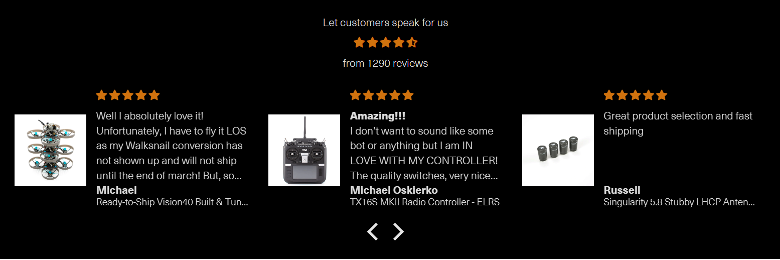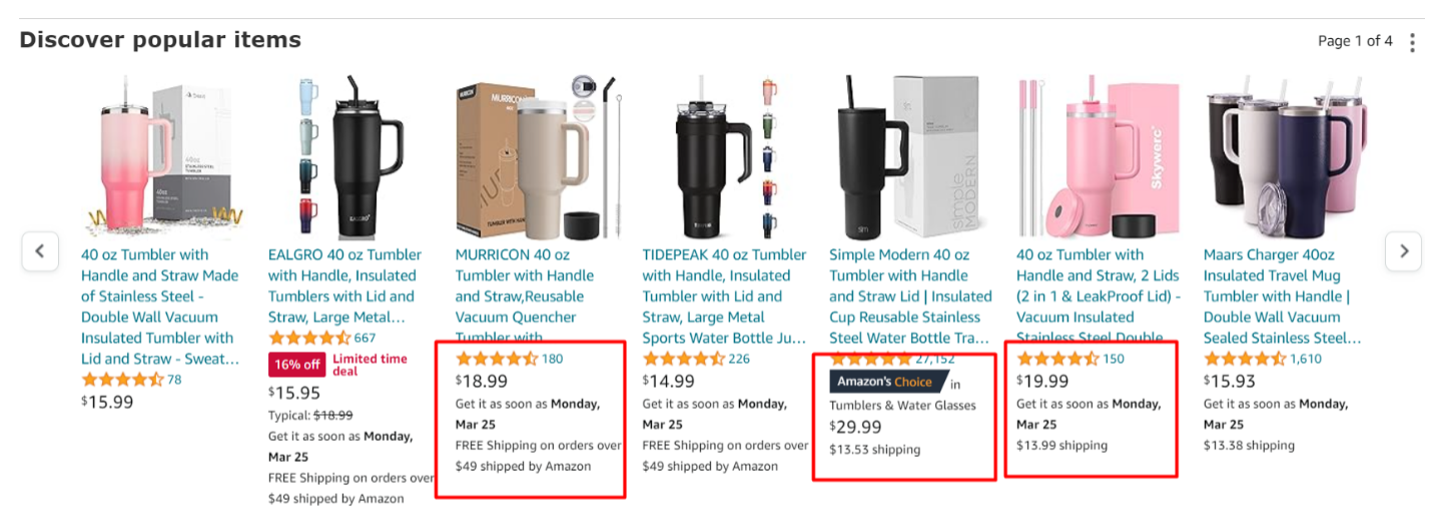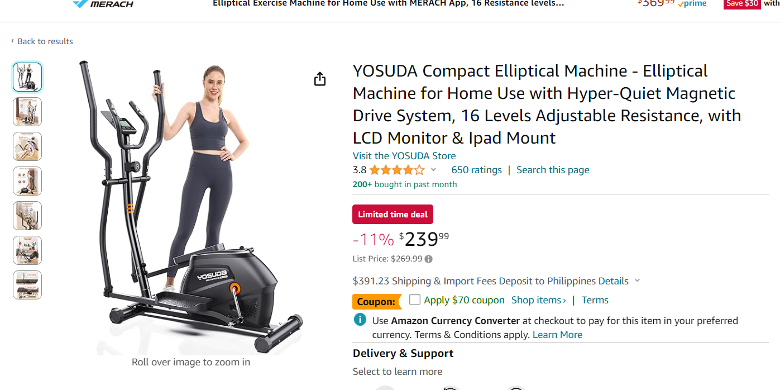
Understanding dropshipping and steps to launch your own online business


All of us want to increase sales, but how? In this article, I will provide you with several methods by which you can boost sales and increase customer retention. In the end, I want you to choose a few of these sales techniques and apply them to your store.
Free shipping has become a “standard” in e-commerce. If you are wondering how you could do this in your Shopify store and not lose money, know that there is no such thing as free shipping. Big companies do not have special arrangements for free shipping with logistics companies.
Whenever you see free shipping, the seller already included the shipment cost in the sale price, and you must do the same.
According to Capital One, a leading g bank in the USA, 80% of American consumers expect free shipping if they meet a certain price point. The same survey says that 66% of American shoppers expect free shipping on all their orders.
This data point tells us that free shipping has become a basic expectation. If you do not offer it, around 50% of your shoppers are likely to abandon their shopping cart.
It is not easy to offer free shipping. However, you can do it little by little by offering your goods to a few regions at a time. Know the highest shipping cost for that region, and then factor that into your sale price. This alone usually increases sales on shopify, by increasing the conversion rate on the checkout page.
Customer reviews are a form of social proof. They essentially tell new shoppers that you can be trusted. New customers always use reviews as a basis for their buying decisions.
Here is a sample customer review highlight:

Here are some more reasons why customer reviews matter to dropshippers:
Implementing a customer loyalty program in your Shopify store can further enhance the value of reviews by encouraging loyal customers to leave positive feedback, thereby fostering a cycle of trust and repeat business.
All dropshipping platforms like Shopify and WooCommerce have apps that will let you share customer reviews. If your store has no review yet, you can use the reviews of customers from the supplier. How do you do this?
For example, if your product comes from AliExpress, there surely are reviews from the buyers of that supplier. These are the reviews that you will share on your store, on the product page of the same item.
To do this, you can either copy and paste the reviews manually, including the star ratings or use an app that will transfer the reviews from the supplier in AliExpress to your store. Most dropship import tools (AliExpress to Shopify) already have this app embedded on their platforms.
If there is no review, do not even think about faking reviews. In addition, you cannot copy the review of the product from another dropshipper—it is unethical to do so.
To get reviews, you must first make sales. From here, encourage customers to leave a review and reward them for it, like a discount on their next purchase.
One of the most common errors I see with how dropshippers position their products is they focus too much on the product feature. While the product feature is mandatory, it is not enough.
Product features are usually technical, and it is difficult for a consumer to understand what they mean. As sellers, we must tell the consumer what a feature does.
Instead of stopping at the feature, explain how this feature can benefit their lives. Here is an example: “10,000 mAh lithium battery – the battery can last up to 30 minutes in flight time.”
The feature is the 10,000 mAh capacity. The benefit is the flight time of the toy drone for 30 minutes. As you can see, the 10,000 mAh feature is technical, and no customer can assess what that is for.
Do this in each product feature—tell the customers how they can benefit from it. In addition to that, take the time to create sections on your product page to highlight the strength of your products.
For example, you can have a section about the flight time, and show a short video clip or GIF of a parent and a child playing with it. Or, show a clip of the drone flying between trees. Add some texts or bullet points that indicate long flight time, long battery life, short charging time, removable and replaceable batteries, etc.
Do this, and any customer reading your product descriptions will have more reasons to buy what you sell.
McDonald’s and many other fast food chains offer bundles for a reason: customers get more value for their money and the company gets a higher average order value (AOV).
AOV is the average amount that customers pay. The higher it is, the more revenue you get. It may sound counter-intuitive, but it does make you sell more units and earn higher cash (revenue).
Take a look at these items sold separately:
Your total profit, if you sold it separately, is $21.15. The problem is that customers will buy only one item at a time. If a customer bought a tumbler, you made a profit of $13 and nothing else.
However, if you offered all three in a bundle, and sold it for $47.99, the customer would have saved $5 because he did not have to pay $52.99 for all three; he only had to pay $47.99
Your profit from this customer is only $16.15, which is lower than if you sold three separately. The good thing about this is that each customer is more likely to buy the bundle to save money, and each bundle purchased gives you a profit of $16.15.
Compare that to a purchase of a single item, and you can see that you made more profit in the bundle than by selling a single tumbler.
Although the profit is smaller, a higher revenue means that your products are moving and that you are making more profit than if you had sold a single item.
Upsells and cross-sells are often confused or mistaken for each other. An upsell means selling a product of higher quality or grade. A cross-sell means selling a product that is complementary or related to the product they are looking at.
The purpose of an upsell is to increase revenue. Instead of a customer buying Bag Model A priced at $24.99, you can offer a bag that is of higher quality but also costs more.
Here is an example from Amazon:

This is the bottom of a product page for a Tumbler on Amazon. The tumbler costs $16.99. At the bottom, Amazon is showing me more options that have higher prices. This is an upsell, which you can do in your store to increase sales.
Now, here is an example of a cross-sell:

The product I am looking at is an elliptical machine. If I scroll down to the bottom, I see this:

The one I highlighted is a cross-sell. It is not a typical elliptical, but it is still a physical fitness apparatus.
Upselling and cross-selling will increase your Shopify sales because you are introducing products to customers that they may not have seen before. It works best for a customer hesitating to buy what is on a product page. This customer is likely going to be interested in buying another product, but only if you show it to him.
Customer psychology encompasses so many things. What you need to tap into, in particular, is a customer’s emotions.
It is why you must write copy that attacks various emotions. The most powerful emotions are:
The way to do this is subliminal. You need to write product copy that makes the consumer see or understand the message without being direct. From time to time, you can be straightforward, but then you have to be careful when making claims.
If you make claims, especially for health, you can not advertise. Many ad networking sites prohibit ads that make medical claims like losing weight, curing diabetes, etc.
Another thing you need to look into is FOMO or fear of missing out. It is a common buyer psychology that they do not want to miss an opportunity to own something. You can tap into this by selling goods at a significantly reduced price, ensuring that the reduced price is offered for a limited period.
Or, you can sell limited-edition items that the customer has to purchase today, or they will never have this chance again.
Understanding the psychology of potential customers is crucial to effectively tap into their buying behavior and convert them into actual customers.
Trust badges are icons and symbols of known financial and security companies. Below is an example:

Trust badges are indicative of credibility. It immediately tells the consumer that you are legit. How could you not be legit if you could work with these companies, right?
There are four types of trust badges:
Trust badges tell site visitors, at a glance, that you are a credible dropshipper or seller. These symbols are known to many people, and the presence of these symbols creates an air of familiarity.
It is common for people not to trust you because they do not know you; they do not know your brand. However, if they see a badge like PayPal, they feel better because they know that PayPal offers a buyer protection program. The customers would feel safe dealing with you.
Trust is an essential component of making a sale. Trust badges can improve your conversion rate and reduce cart abandonment. If possible, place the financial trust badges on the product page, just below the add-to-cart button. Include it also in the checkout for maximum impact.
Think about this: if you only accept Visa payments, you are missing out on so many potential sales from users of Mastercard, AMEX, JCB, etc. And we are only talking about credit cards.
I have seen a rise in payment systems in recent years. In the past, it was only PayPal that dominated the online payment processing industry. Today, there are so many of them. Some examples are:
While you cannot offer all of these, you must at least try to add as many as you can. The choice will depend on your target region. For example, Skrill is a good additional payment option if your main market is Europe.
Without a means to pay, a customer will not proceed with the transaction. The situation is so similar to physical transactions—if a customer has no cash and the merchant only accepts cash, the customer will not buy. However, if this merchant accepts credit cards, the customer is more likely to buy this item now, even if he does not have the money.
The good news is that you do not have to set up all these. Surely, you have to sign up for a merchant account with Apple Pay or Google Pay, but you do not need to integrate them into your store at all.
There are tools like Shopify Payments that already have them built in. It means that you can accept many types of payments with only one payment processor.
Proof of concept or value is like a testimony. It is how you convince a customer that your product works or that it can solve a problem.
The most common ways to show these are:
We have already discussed the first, so let us focus on the second and third.
Take the time to create a video of your product being used by somebody. If it is a drone toy, show a child flying it. If it is a pet food dispenser, show a cat or dog using it. A product in action makes it easier for the target buyer to see its value.
If your supplier does not have a video, ask them if they can make one. If not, buy the product and shoot the video yourself. You do not need to show this for all products. You can start with one and then post than on your dropshipping store’s homepage. Post it also in your social media accounts.
For user-generated content, it makes sense to create a contest. You can ask buyers of your product to create a video post it on their social media accounts and tag you. This activity will create a buzz, and you will benefit from it.
User-generated content is much more believable than typical video ads. It is much more trustworthy, and it is why many companies spend so much money paying content creators to create UGC for their brands.
It is not unusual for shoppers to add items to their cart, only to suddenly change their minds and leave your website. There is no single reason why they do this, but no matter what, it makes perfect sense to run a campaign for abandoned carts.
An email campaign for abandoned carts means you will send an email follow-up to the customers who abandoned their carts. The email can be a mass email or a personalized one.
Here are the benefits of running an abandoned cart email campaign:
You cannot create a campaign like this without a special tool. The one you need is an email marketing software. Below are some examples:
If Shopify is your platform, then you are in luck. The system has already included an abandoned cart email campaign. Shopify automatically tracks and saves email addresses of customers who went as far as the checkout page but did not complete the transaction.
BigCommerce has the same system. If you are using something else, you need to pick an email marketing tool that you can integrate with your dropshipping platform. The problem is that an abandoned car email campaign system costs money—you need to pay a subscription monthly, so it is better to use either Shopify or BigCommerce.
People love to buy if their purchases support a cause. It can be a political cause, a charitable cause, or an environmental cause. Today, it is all too common to see companies that sell items made from recycled materials.
As a dropshipper, you can do the same. There are products made of recycled materials or products that we call “green.” You can also sell products and earmark a percentage of the proceeds to charity.
This type of selling is called Charitable Marketing. It is a process where you nudge a person’s kindness to make a sale.
Charitable selling works because:
Should you do this, make sure you have proof. take the time to take photos of the charitable organization that you support, with your brand in the photos. One caveat I can tell you is that some people frown on this. They would say that you are using charity for business and that it is unethical.
For starters, try to sell products made from recycled materials. You can find these products from print-on-demand companies like Printify and Printful. To make it work, use the cause in your social media posts, ads, and your product pages.
The trick here is to make your cause known. It has to be on your product pages and your home page. The reader, or your site visitor, should never miss the information.
Effortless experience means that the customers should do things the easy way. The less effort they put in, the more satisfied they become. And as they are satisfied, they are more likely to get in the mood of parting with their money.
Here are some examples:
Some dropshippers do all sorts of things on their websites because they think these things make the website unique. Ultimately, it is the customer who finds these designs annoying. Keep your website simple and always think of the customer’s experience.
Information like shipping policies, return or refund policies, should be easy to find. Do not hide this information. Put links at the bottom of your site, or your footer, or add a link to these policies in your product pages.
The key concept to understand here is that if a customer is having difficulty using and navigating your site, he will leave and not make a purchase.
To succeed, I recommend that you pick a few of these tips that you can work on right now. It is not a good idea to implement all of them right away. Not all of them may be applied to your business, so pick only the reasonable ones.


Understanding dropshipping and steps to launch your own online business

Discover top strategies to identify high-demand, profitable products on AliExpress

Learn about strategies that drive traffic to your store, including effective advertising practices

Learn about several proven methods to increase your store sales
Imagine someone asks you who your supplier is, and then you have to tell them it’s a private agent, or AliExpress, or an automation tool that simply buys from AliExpress for you. It’s 2025. Your customers, your revenues, and your profits will thank you.
Get started for free
You need to load content from reCAPTCHA to submit the form. Please note that doing so will share data with third-party providers.
More InformationYou are currently viewing a placeholder content from Turnstile. To access the actual content, click the button below. Please note that doing so will share data with third-party providers.
More InformationYou are currently viewing a placeholder content from Facebook. To access the actual content, click the button below. Please note that doing so will share data with third-party providers.
More Information